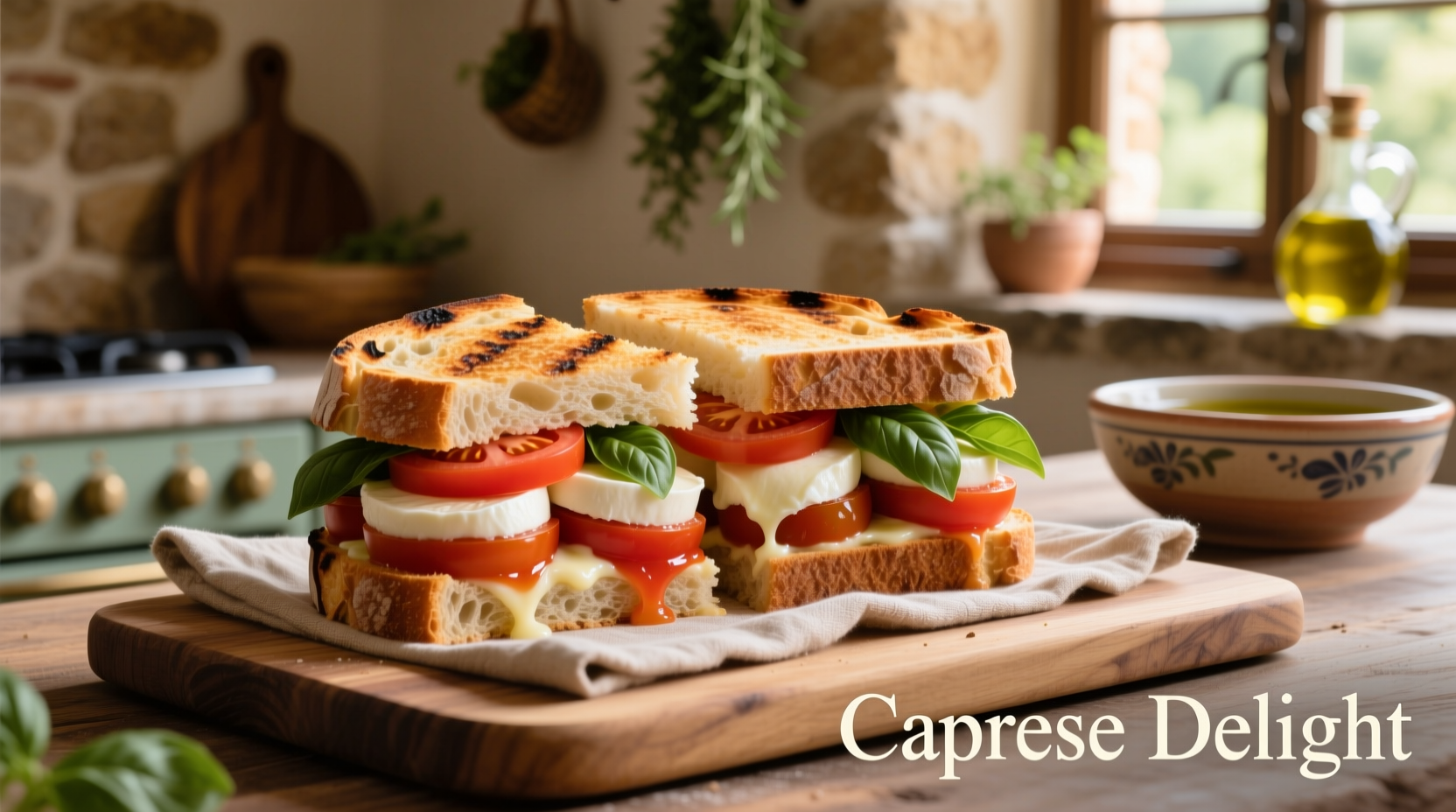Discover how to make the perfect tomato and mozzarella sandwich with our step-by-step guide. You'll learn authentic preparation techniques, ingredient selection secrets, and professional tips that transform this simple dish into a culinary masterpiece. This comprehensive guide includes storage recommendations, flavor variations, and common mistakes to avoid.
The Essential Guide to Crafting the Perfect Tomato and Mozzarella Sandwich
When crafted with care, a tomato and mozzarella sandwich delivers a refreshing burst of flavors that embodies summer simplicity. This Italian-inspired creation—often called a Caprese sandwich—combines juicy tomatoes, creamy mozzarella, and aromatic basil with minimal ingredients that maximize taste. Unlike ordinary sandwiches, this recipe balances acidity, creaminess, and freshness in every bite.

Why This Classic Combination Works
The magic of a tomato and mozzarella sandwich lies in its ingredient synergy. Tomatoes provide natural acidity and umami, while fresh mozzarella offers creamy richness that balances the tomato's tartness. When combined with quality bread and aromatic basil, these elements create a harmonious flavor profile that satisfies without overwhelming.
| Ingredient | Flavor Contribution | Texture Role |
|---|---|---|
| Vine-ripened tomatoes | Acidity, sweetness, umami | Juicy, firm structure |
| Fresh mozzarella | Creamy, mild saltiness | Soft, yielding texture |
| Good quality bread | Nutty, toasty notes | Firm structure, slight crunch |
| Fresh basil | Herbal, slightly peppery | Delicate leaf texture |
Choosing the Right Ingredients
Ingredient quality makes or breaks your tomato and mozzarella sandwich experience. For authentic results, select ingredients at their peak freshness.
Tomato Selection Guide
Not all tomatoes work equally well in sandwiches. Heirloom varieties like Brandywine or Beefsteak provide superior flavor and texture compared to standard grocery store tomatoes. Look for tomatoes that feel heavy for their size with smooth, unblemished skin. Avoid refrigerating tomatoes as cold temperatures destroy flavor compounds—store at room temperature until ready to use.
Mozzarella Matters
Fresh mozzarella packed in water (mozzarella di bufala or fior di latte) delivers the authentic creamy texture essential for this sandwich. Avoid pre-shredded or low-moisture mozzarella, which lacks the proper texture and flavor. Pat the mozzarella dry with paper towels before assembling to prevent a soggy sandwich.
Step-by-Step Assembly Technique
Professional chefs follow specific techniques to prevent the common pitfall of a soggy sandwich. The order of layering significantly impacts texture and flavor distribution.
- Prepare your bread: Use a rustic Italian loaf or ciabatta with a crisp crust and open crumb structure. Lightly toast the bread to create a moisture barrier.
- Apply protective layer: Spread a thin layer of high-quality olive oil or pesto on both slices—this creates a barrier against tomato moisture.
- Season tomatoes: Slice tomatoes ¼-inch thick and sprinkle with flaky sea salt. Let sit for 5 minutes to draw out excess moisture.
- Layer strategically: Place tomatoes on bottom slice, then mozzarella, followed by fresh basil leaves. Avoid stacking too high.
- Final touches: Drizzle with balsamic reduction (not vinegar) and freshly cracked black pepper before closing the sandwich.
Avoiding Common Mistakes
Even simple sandwiches can go wrong without proper technique. The most frequent error is assembling the sandwich too early—moisture from tomatoes will inevitably soften the bread. For best results, assemble immediately before eating. If preparing ahead, pack ingredients separately and assemble at serving time.
Historical Context and Evolution
The tomato and mozzarella sandwich evolved from Italy's Caprese salad, which originated on the island of Capri in the 1920s. Food historians believe the combination was created to showcase the colors of the Italian flag—red tomatoes, white mozzarella, and green basil. While the salad form appeared first, the sandwich adaptation gained popularity globally as travelers sought portable versions of this classic combination.
| Time Period | Development | Key Influences |
|---|---|---|
| 1920s | Caprese salad created in Italy | Local island ingredients, Italian flag symbolism |
| 1950s-60s | Spread to mainland Italy and Europe | Tourism growth, post-war culinary exchange |
| 1980s-90s | Adapted as sandwich format globally | Rise of casual dining, portable food trends |
| 2000s-present | Specialty variations emerge worldwide | Farm-to-table movement, artisanal ingredient focus |
Storage and Food Safety Guidelines
Due to the fresh ingredients involved, proper storage is crucial for both quality and safety. According to the USDA Food Safety and Inspection Service, assembled sandwiches containing fresh produce and dairy should not remain at room temperature for more than two hours. For best results, store components separately:
- Tomatoes: Room temperature, stem-side down, for up to 3 days
- Mozzarella: Refrigerated in original liquid, consumed within 5 days of opening
- Assembled sandwich: Refrigerated for maximum 4 hours before serving
Delicious Variations to Try
While the classic version shines with simplicity, these thoughtful variations enhance the basic formula without compromising its essence:
- Mediterranean twist: Add thinly sliced red onion and Kalamata olives
- Summer garden version: Include cucumber slices and fresh oregano
- Grilled option: Lightly grill the assembled sandwich for melted cheese texture
- Prosciutto enhancement: Add one slice of high-quality prosciutto for savory depth
Serving Suggestions
Pair your tomato and mozzarella sandwich with complementary sides that enhance rather than compete with its fresh flavors. A simple mixed green salad with lemon vinaigrette provides the perfect accompaniment. For beverages, consider a crisp white wine like Pinot Grigio or a sparkling water with lemon wedge. Avoid heavy sides that would overwhelm the sandwich's delicate balance.
Final Tips for Sandwich Perfection
Seasoning at each layer creates depth of flavor—don't wait until the end to add salt. Use flaky sea salt rather than table salt for better texture and flavor release. When slicing tomatoes, use a serrated knife to prevent crushing the delicate flesh. For the best texture contrast, choose bread with a crisp crust and open crumb structure that can withstand moisture without becoming soggy.











 浙公网安备
33010002000092号
浙公网安备
33010002000092号 浙B2-20120091-4
浙B2-20120091-4